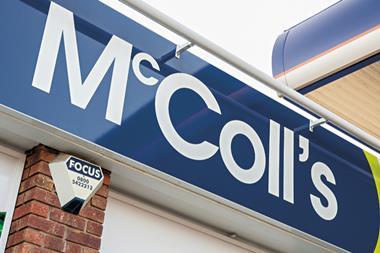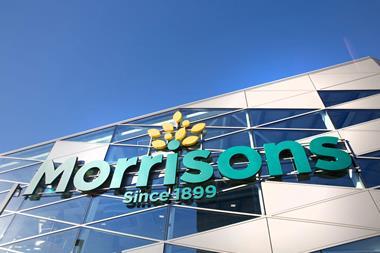Jack Monroe sparked a media storm last week by showing it is budget items facing some of the biggest price hikes. Is she right?
Crumbling loyalty. Ferocious price wars. Lidl and Aldi. The supermarket landscape is fiercely competitive. They’re used to losing customers to each other. Now though, they’re losing them to food banks as well.
Richard Walker, Iceland CEO, said last week that shoppers were leaving for “food banks or hunger” as rampant inflation ratchets up prices on everything from energy to food. Yet this is not simply a story of mounting poverty. The injustice stretches further than that, says Jack Monroe, a food writer and anti-poverty campaigner, who in a viral Twitter thread last week showed how the biggest price hikes were hitting some of the cheapest products. In one local supermarket, Monroe wrote, a year ago the “cheapest rice” cost 45p for 1kg. Today it’s £1 for 500g. Curry sauce was 30p, now it’s 89p. A bag of small apples was 59p, and is now 89p.
Monroe argues the ONS’s latest annual inflation figure of 5.4% for December “grossly underestimates the real cost of inflation as it happens to people with the least,” not just because the cheapest products see some of the biggest hikes, but because supermarkets are slashing the value ranges upon which poorer families rely.
“Supermarkets need to make profit but the price rises could be applied more evenly and fairly across the board”
“It’s extraordinarily difficult to manage when you’ve got very little because the playing field isn’t entirely level,” says Monroe. “And actually, it’s the retailers who are playing quite a large part in not levelling it.”
In many cases, Monroe’s price claims are justified. At Asda, prices are now 56% higher than a year ago for a basket of the cheapest products on her list, according to our research (using Assosia data). A kilo of its cheapest rice is up 162% compared with a year ago and now costs an extra 73p. Asda’s cheapest jar of curry sauce is up 39%. A 500g bag of fusilli is up 67%.
Tesco and Sainsbury’s Aldi Price Match has kept them largely in line with average inflation (for Monroe’s list at least) but it’s a different picture at Asda – and Morrisons.
Woke up this morning to the radio talking about the cost of living rising a further 5%. It infuriates me the index that they use for this calculation, which grossly underestimates the real cost of inflation as it happens to people with the least. Allow me to briefly explain.
— Jack Monroe (@BootstrapCook) January 19, 2022
Monroe wants supermarkets to add an extra penny or two to each of the other products in the category, rather than placing it on the cheapest where low-income shoppers are disproportionately affected. “Supermarkets need to make profit but the price rises could be applied more evenly and fairly across the board.”
Iceland is setting an example, she says, by ringfencing its £1 frozen lines from any price hikes until the end of next year.
So why are some of the cheapest products seeing such significant hikes? There are a few factors at play. First: value products are typically sold at lower margins than branded goods. Branston, for example, adds a price premium for its name alone. This means when costs rise, businesses selling cheaper goods have less margin to absorb it and prices rise faster and further.
It is a trend seen across household staples. Sainsbury’s value peanut butter went from 85p to 89p in the past 12 months while Meridian fell from £2.80 to £2. Tesco’s 500g budget fusilli rose from 53p to 70p while Napolina’s equivalent item stayed at £1 in the same period.
And just to add:
— Jack Monroe (@BootstrapCook) January 19, 2022
- an upmarket ready meal range was £7.50 ten years ago, and is still £7.50 today.
- a high-end stores ‘Dine In For Two For £10’ has been £10 for as long as I can remember.
- my local supermarket had 400+ items in their value range, it’s now 91 (and counting down)
When inflation strikes, manufactured goods have the advantage of being able to mitigate price hikes by adjusting their specifications or downgrading ingredients. In a ready meal lasagne, for example, it’s easy enough to downgrade your tomatoes without angering many customers. For fruit & veg, it’s not so easy.
Of course, the rule that budget products are hit hardest is not infallible. A 415g tin of Heinz Beanz in Asda has actually risen more sharply (85p to £1) than its budget equivalent over the past 12 months (29p to 32p). Similarly, a Warburtons 400g wholemeal loaf (90p to £1) in Morrisons is up at exactly the same rate as the value own brand (45p to 50p).
Particularly on core products like bread, milk, cheese and chicken, supermarkets are always trying to drive prices down “because they know that’s what drives footfall,” says Richard Lim, CEO of Retail Economics. “These are typically the areas that are most fiercely competed on.”
Shrinking value
To Monroe’s other point that supermarkets are shrinking their value ranges, again, there appears to be some truth. Asda sold a Smart Price 1kg bag of rice for 45p at the start of 2021 but discontinued it online in September. Now, the cheapest option is £1.18, according to its website. At Morrisons, a bag of ‘wonky’ apples cost 80p a year ago, only to be discontinued in June. Now it costs a minimum of £1.20.
It’s a common theme. Sainsbury’s commitment to its Aldi Price Match campaign has wavered: from 255 in early October to 209 the week before Christmas, according to consultancy firm IPLC, causing prices to rise on items from lamp chops to biscuits. It was back up to 260 at the start of the year but fell back by 20 items last week.
Sainsbury’s is confident it’s offering customers “consistently great value on the products they buy most often, and we’re not reducing our own brand value range”, it says, adding that the number of entry-level lines increased from 186 to 191 over the 12 months.
The system by which we measure the impact of inflation is fundamentally flawed - it completely ignores the reality and the REAL price rises for people on minimum wages, zero hour contracts, food bank clients, and millions more.
— Jack Monroe (@BootstrapCook) January 19, 2022
But while many shoppers might not see the value products at their local store, that doesn’t mean they don’t exist, says Steve Dresser, director of Grocery Insight. With shelf space is at a premium, “the lack of own-label tinned fruit in a Tesco Express doesn’t mean the price is £1.15 everywhere. It just means that here, in this store, it is.”
Asda makes a similar argument: it claims that just because almost half of its 224 budget Smart Price products have been removed online over the past two years doesn’t mean they are not still available in store. Yet for Monroe, this exactly proves her point. That for disabled people, the housebound, the elderly, anyone who shops online due to a lack of transport, this budget range is no longer available.
“They’re deliberately excluding a certain customer base,” she says. “Offering them only in store seems somehow worse than withdrawing them entirely.” By comparison, Asda cut just 9% of its premium range online over the same period.
An Asda spokesman says the Grocer’s analysis “makes inaccurate product comparisons and incorrectly states that some mid-tier products are the cheapest option available at Asda. It does not include some Smart Price products available in store both a year ago and today despite these being the lowest-priced option available to customers.”
Inflation inequality
For Jack Leslie, senior economist at the Resolution Foundation, one of the most important points to emerge over the past week is a recognition that the official ONS inflation figures are misleading, failing to represent how inflation is felt within poorer households.
ONS collects inflation data through in-store visits, tracking prices against a fixed list of products. If one of the items is delisted, they find a replacement of similar quality. However, if a value item disappears altogether, ONS says that “breaks the price chain” and it will no longer be included in the statistic. Therefore, in cases like Asda’s cheapest rice or Morrisons’ ‘wonky’ apples, though shoppers are suddenly forced to pay more, this is not reflected in the inflation figure.
Read more:
-
Iceland offering ‘ethical loans’ to help families pay food bills
-
How inflation threatens fmcg businesses – and more – in 2022
-
Rice prices on the rise as exports suffer from disruption to supply
-
How retailers and suppliers can lock in loyalty in the era of inflation
Some commentators noted this week that ONS figures suggest inflation is experienced at equally high levels across income brackets. Nonetheless, ONS has publicly recognised a flaw in its own data and is planning to incorporate direct feeds of supermarket ‘scanner’ data to help give a more nuanced view on inflation. “One inflation rate doesn’t fit all,” the body says, and it will soon be publishing a wider variety of cost-of-living metrics. “We are restarting publication of inflation broken down according to how much income you earn.”
Monroe, meanwhile, is working on her own measure: the ‘Vimes Boots Index’, to chart the “disappearance of the budget lines and the insidiously creeping prices of the most basic versions of essential items”. After all, she points out, even if everyone is facing equal inflation, 5% more on theatre tickets and clothing for higher earners is not the same as 5% more on essential items like food and fuel. Poorer households spend a bigger share of income on such non-discretionary items, so “it’s not the really the same 5%, is it?” she asks.
For those that don’t know the works of Terry Pritchett this is where #VimesBootsIndex comes from. The wise musings of His Grace, The Duke of Ankh, Commander Sir Samuel “Sam” Vimes. pic.twitter.com/np3VqWJmoq
— Morag (@moragkatie) January 21, 2022
And things are only set to get tougher. The looming energy price cap jump in the spring could triple the number of English households spending more than a tenth of their budget on fuel bills, according to the Resolution Foundation. This will leave poorer households even less able to absorb rising food prices.
For years, campaigners have lacked the statistical evidence to argue rising costs hit the poorest most. But with ONS’s new measure in the pipeline and Monroe’s index due in February, the true cost of inflation on the poor is set to become much, much clearer.




















No comments yet